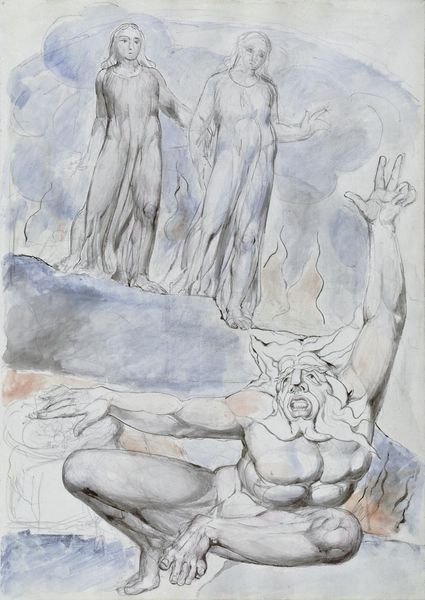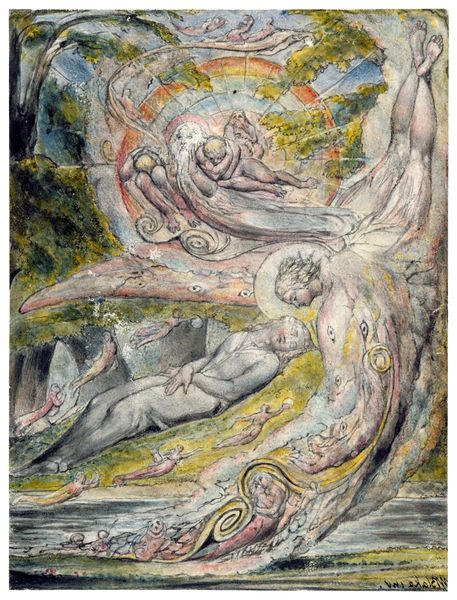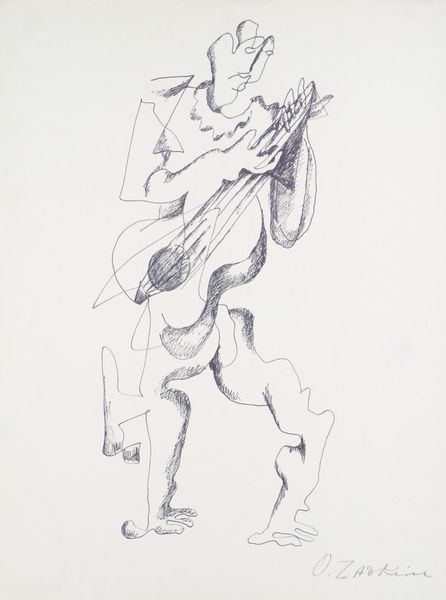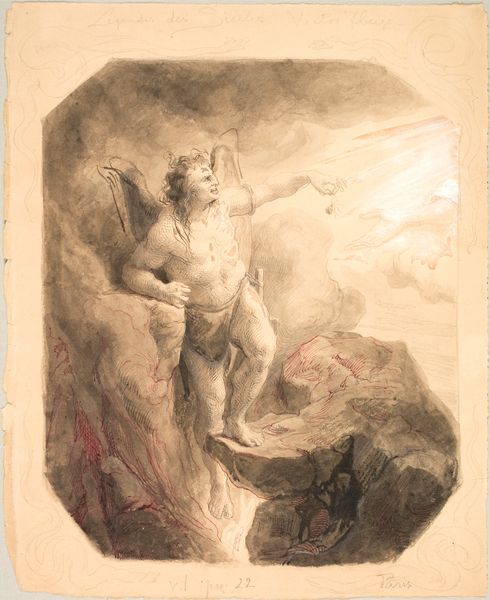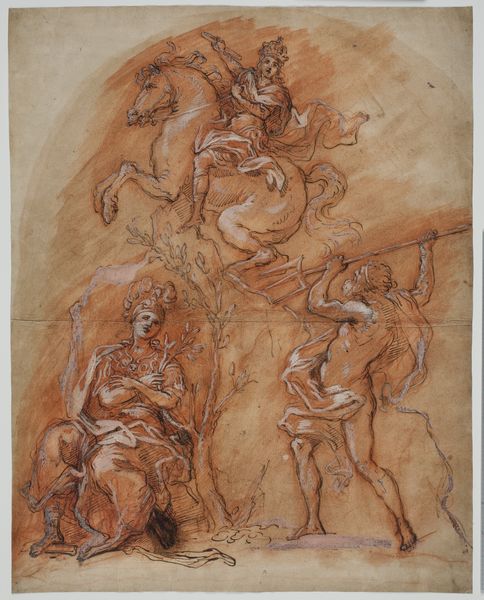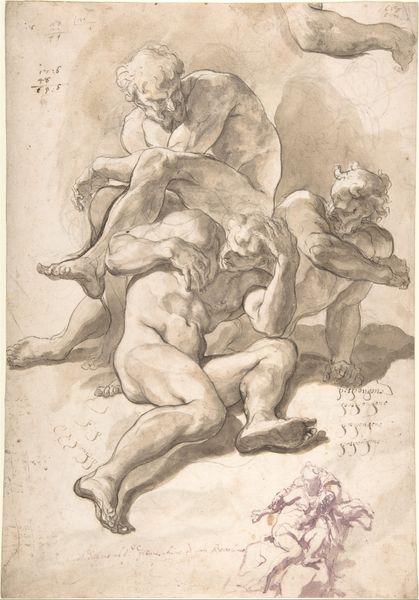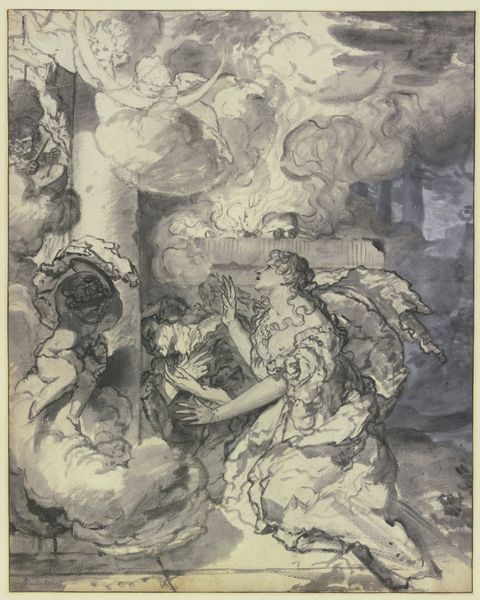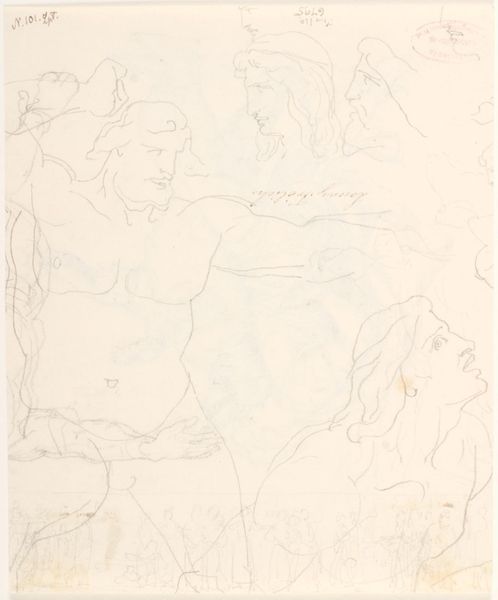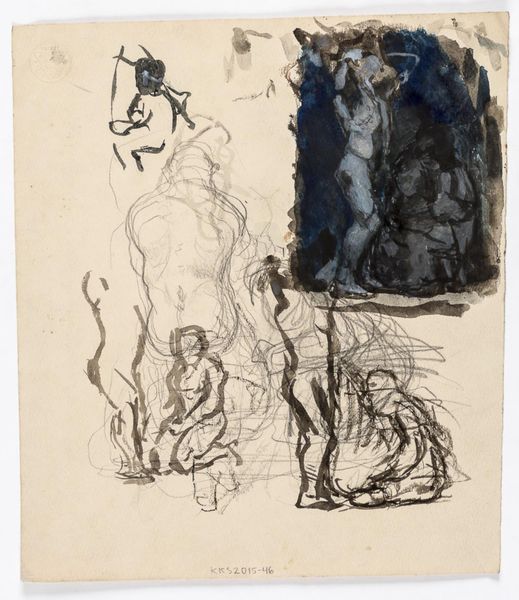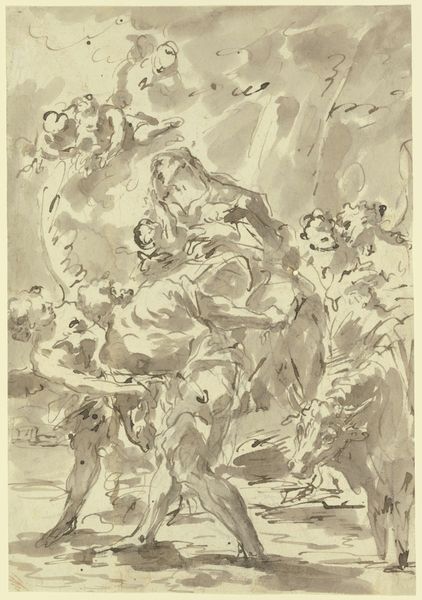
Dimensions: support: 527 x 371 mm
Copyright: NaN
Editor: Here we have William Blake's "Plutus," a watercolor drawing. It's hard to ignore the raw emotion in Plutus's figure and the stark contrast with the serene figures above. What compositional elements stand out to you? Curator: Note the stark dichotomy achieved through line and form. The figures above are rendered with flowing lines and a muted palette, exuding ethereality. In contrast, Plutus below is defined by harsher, angular strokes, amplifying his torment. Editor: So the contrast in technique underscores the difference in their experiences? Curator: Precisely. Blake masterfully employs visual language to delineate the spiritual from the corporeal. The figures above are seemingly unbound, while Plutus is trapped within the frame, a prisoner of his own materiality. Editor: It’s amazing how much meaning is conveyed through these formal choices. Curator: Indeed. By analyzing these elements, we can understand the artist's deeper intentions.
Comments
Join the conversation
Join millions of artists and users on Artera today and experience the ultimate creative platform.
tate 7 months ago
⋮
In Dante’s text Plutus, the god of riches, guards the souls of the avaricious. Evoking a belief commonly held at the time that the Jewish race was characterised by an unscrupulous desire for wealth, Blake’s figure has features that recall 18th-century images of Jews. Anti-Semitism permeated Lavater’s system of physiognomy, and was influenced by his personal interpretation of the Christian faith. At one stage Lavater argued that in order to achieve a higher level of existence, Jews must convert to Christianity, after which their features would begin to shed their Jewish characteristics. Gallery label, March 2011
